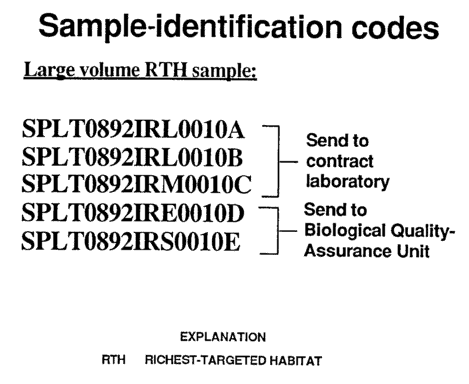Sample-identification codes are unique for each sample and sample jar. Figure 12 illustrates the sample-identification codes that might result from processing one composite sample. In this example, the large-rare component from an RTH sample (IRL) was placed into two sample containers (A and B). The main-body (M), elutriate (E), and split (S) sample components are contained in single containers (C, D, and E, respectively). Sample-bottle sequence codes are assigned to sample components in the following sequence: large-rare, main-body, elutriate, and split. Assigning sample-bottle sequence codes in this manner ensures that contract laboratories cannot determine which samples have supporting quality-assurance samples based on gaps in the sample code sequences received by the laboratory.
